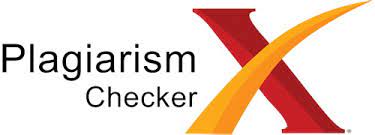Pengaruh Penambahan Sabut Kelapa Terhadap Agregat Pada Kuat Tekan Beton K-175
DOI:
https://doi.org/10.33603/jki.v12i2.9848Abstract
The use of organic waste as a substitute material in concrete mixtures is one of the efforts to reduce environmental impacts and optimize the utilization of existing natural resources. Coconut fiber, as one of the abundant agricultural wastes, has the potential to be used as an aggregate substitute in concrete. This study aims to analyze the effect of coconut fiber addition on the compressive strength of K-175 grade concrete. Coconut fiber was used as a partial replacement for coarse aggregate with variations of 0%, 0.3%, 0.5%, and 0.8%. Concrete was tested at 7, 14, and 28 days to measure the compressive strength produced at each test age. The results showed that the control concrete (without coconut fiber) produced the highest compressive strength at all test ages. The addition of coir caused a decrease in compressive strength, especially at 7 days, which was due to the interaction between coir and cement matrix which was not optimal at the initial stage of hydration. However, at 28 days, the concrete with coir addition showed an increase in compressive strength although it was not significant compared to the control concrete. The optimum level of coir that does not significantly reduce the concrete quality is about 0.3%. Despite the reduction in compressive strength, the concrete produced at this level still meets the strength standards required for lightweight concrete applications or concrete with medium strength specifications. This study suggests that coir can be considered as an alternative aggregate replacement material in the production of environmentally friendly concrete, with appropriate proportion adjustments to optimize concrete performance.
Keyword: aggregate, coconut fiber, concrete compressive strength, eco-friendly concrete, K-175 concrete.
Downloads
Published
Issue
Section
License
- Authors retain copyright and grant the journal right of first publication with the work simultaneously licensed under a Creative Commons Attribution-ShareAlike 4.0 International License that allows others to share and adapt the work with an acknowledgement of the works authorship and initial publication in this journal.
- Authors are able to enter into separate, additional contractual arrangements for the non-exclusive distribution of the journals published version of the work (e.g., post it to an institutional repository or publish it in a book), with an acknowledgement of its initial publication in this journal.
- Upon receiving the proofs, the Author/Editor agrees to promptly check the proofs carefully, correct any errors, and authorize the publication of the corrected proofs.











